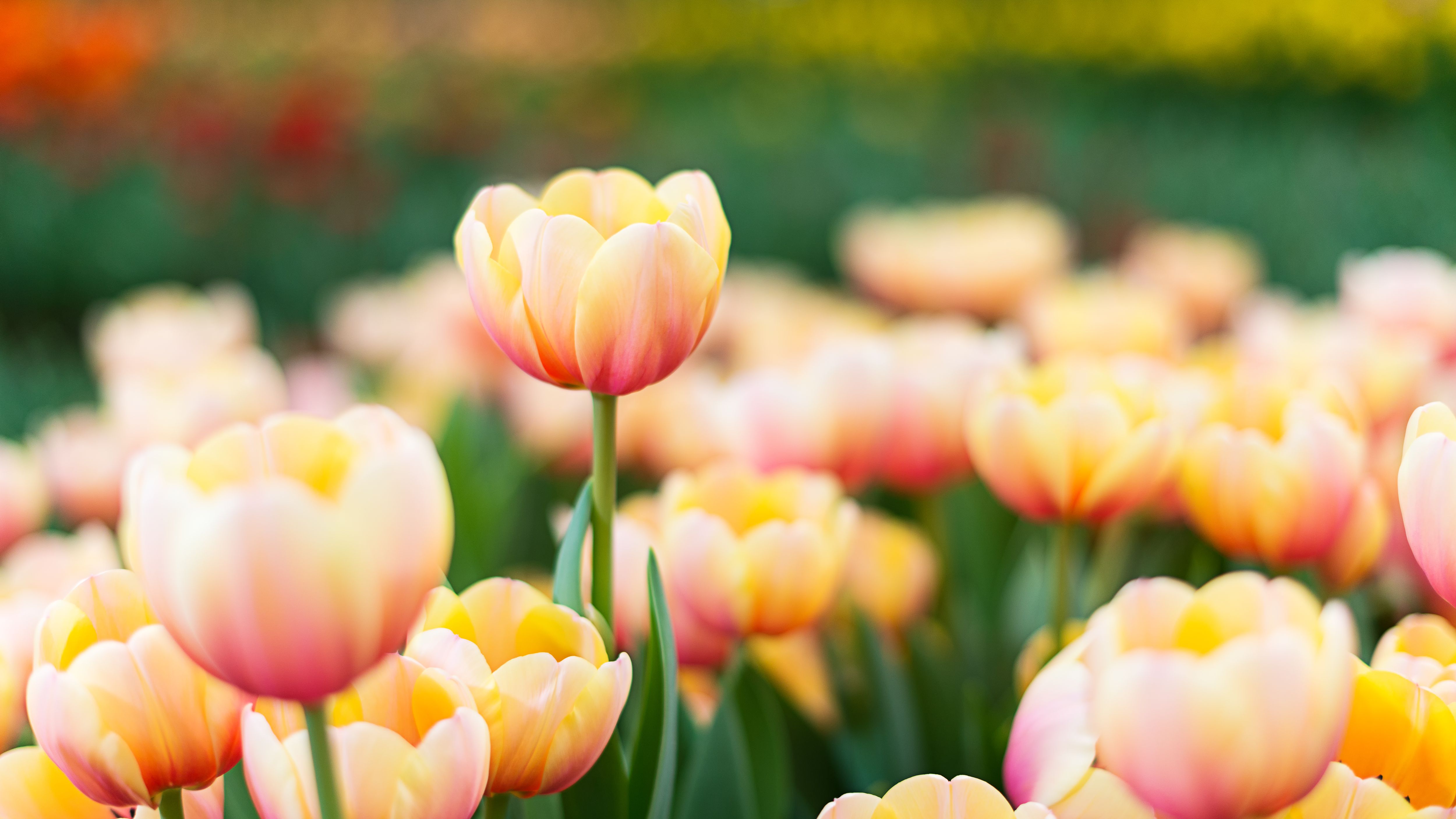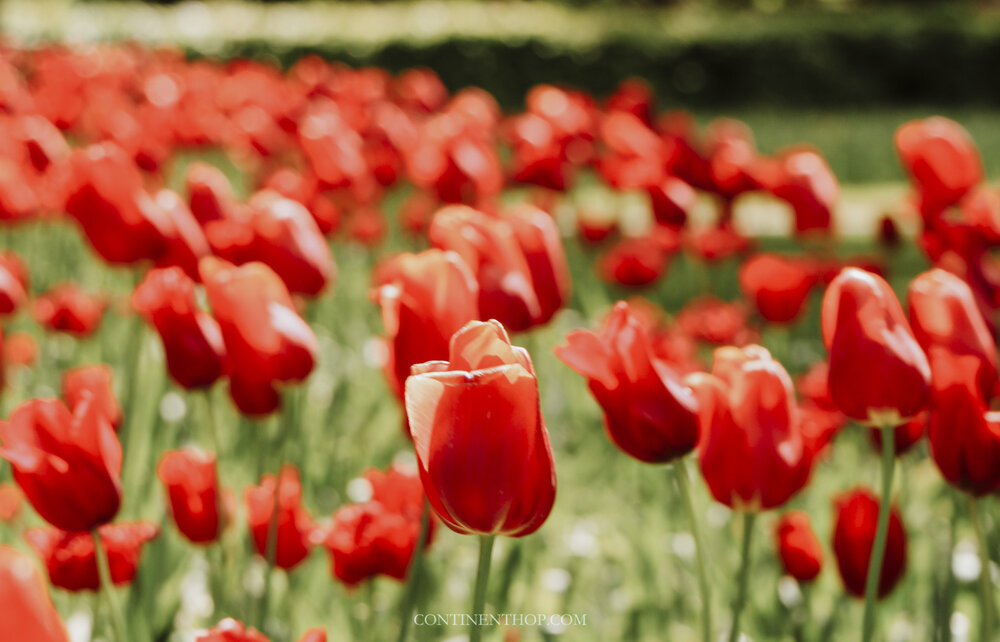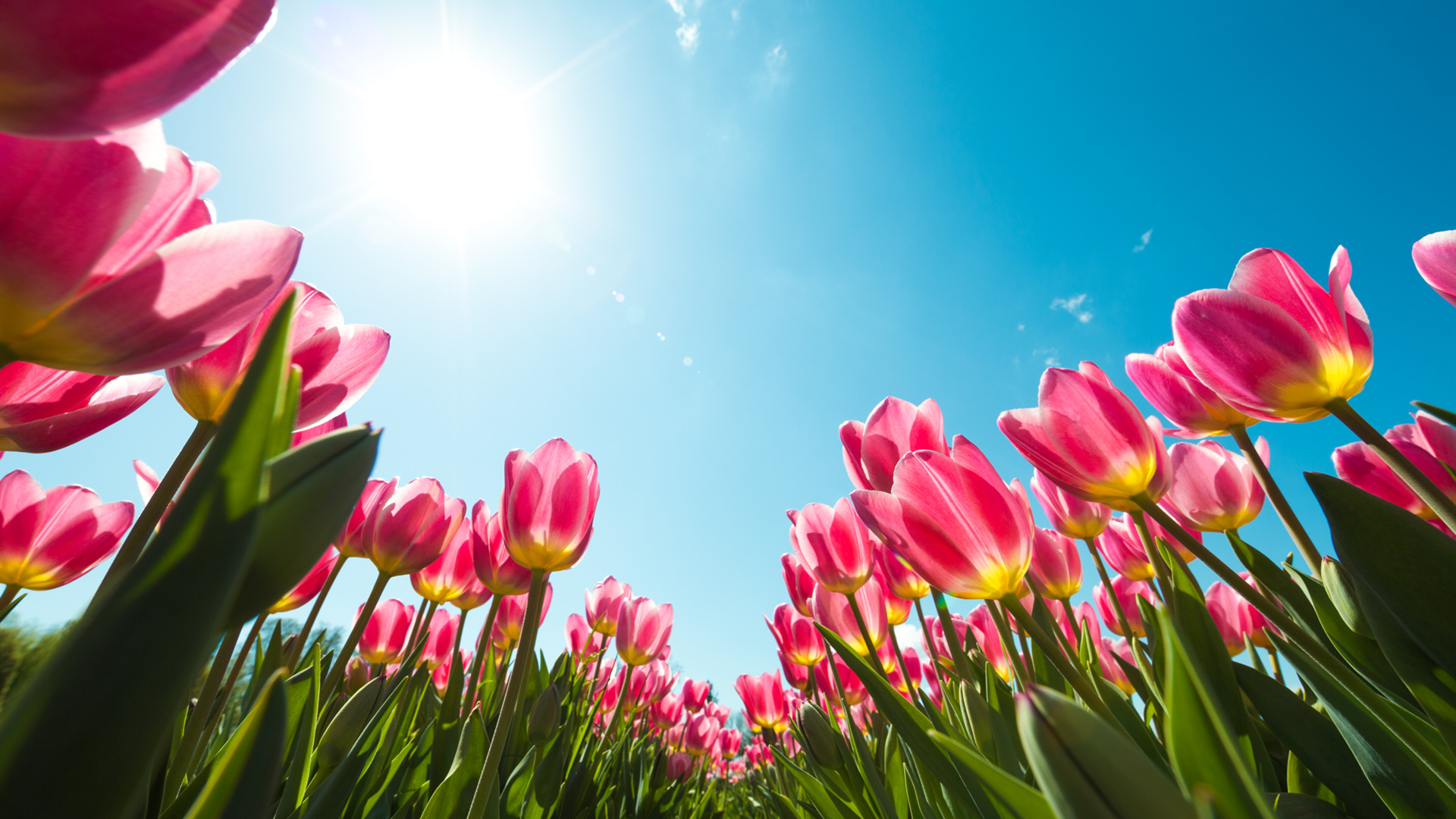Tulip Profile
Written by admin
Mar 11 2021

Tulips are perennial herbaceous plants of the genus Tulipa in the Liliaceae. Tulips are widely considered to be native to Turkey and are the national flower of Turkey, the Netherlands, Hungary, and other countries.
Tulip morphological characteristicsTulip growth habit and growing environment and distributionTulip efficacy and rolePharmacological actionOrnamental valueTulip cultivationSplit ball reproductionSowing reproduction
Tulip leaves generally have 3-5, strip-lanceolate to ovate-lanceolate. The flower is single terminal, large and gorgeous, with red tepals or mixed with white and yellow. Sometimes it is white or yellow, 5-7 cm long, 2-4 cm wide, 6 stamens are the same length, filaments are glabrous, without styles, and the stigma is enlarged and looks like a cockerel. Tulips generally bloom from April to May.
Tulip morphological characteristics
Tulips are perennial herbs. The bulbs are more conical, about 2-3cm in diameter, with a pale yellow to brown skin on the outside, and 2-5 fleshy scales inside. Its stems and leaves are smooth and white powdered. The leaves are 3-5, band-lanceolate to ovate-lanceolate, wavy all around, often hairy, of which 2-3 are broad and basal. Flower solitary stem top, large, upright cup-shaped, magenta, bright yellow to purplish red, with black purple spots at the base, 6 tepals, free, obovate oblong. The flowering period of tulips is generally between March and March.Tulip growth habit and growing environment and distribution
Tulips are native to the Mediterranean coast, Central Asia Minor, Turkey and other places. Due to the Mediterranean climate, tulips are adapted to the cold and humid winter and dry and hot summer. They are dormant in summer, root in autumn and winter, and sprout new buds but do not unearth. After low temperature in winter, they begin to expand and grow to form stems and leaves in early February of the second year. The characteristic of flowering from March to April. The suitable temperature for tulip growth and flowering is 15-20℃.Tulip is a long-day flower, it is sunny, sheltered from the wind, warm and humid in winter, cool and dry in summer. It can grow normally above 8℃ and generally can withstand a low temperature of -14℃. Tulips are very resistant to cold.

Tulip efficacy and role
Pharmacological action
It has been reported that tulip flowers and leaves contain a toxic alkaloid whose physiological effect is similar to that of Veratrine Tulipin ABC to inhibit Bacillus subtilis. After the tulip juice passes through the cation and anion exchange resins, it still has an antibacterial effect on Staphylococcus aureus. The alcohol extract of stems and leaves has an antibacterial effect on Bacillus cereus mycoides, and its active ingredients contain a variety of amino acids.Ornamental value

Tulip cultivation
Commonly used to divide the ball and sowing propagation.Split ball reproduction

Sowing reproduction
The sowing and propagation of tulips are mostly used to cultivate new varieties. The seeds are harvested before the capsules mature and crack, and the sand is sown in indoor pots until October. You'd better keep the soil moist and germinate in the spring of the following year. Tulips bloom in about 3-4 years.Latest Updated
- Benefits of Bugleweed - 7 Science-backed Health Benefits
- Bugleweed Dangers & Side Effects - Is It Poisonous?
- How to Plant Evergreen Trees - What You Should Know
- When to Plant Evergreens - Grow Guide for Evergreen Trees
- 12 Wonderful Evergreen Shrubs for Your Garden
- 12 Popular Evergreen Plants with Pictures for Beginners
- When And How To Prune A Lilac Bush Like a Pro
- How to Grow & Care for Lilac Vine (Hardenbergia Violacea)
- Japanese Lilac Tree (Syringa Reticulata) Care & Propagation Guide
- Shumard Oak Pros and Cons - What to Know
Popular Articles
- Winter maintenance of Antirrhinum Majus
- How to Grow Terminalia Mantaly Tree
- How to Grow and Care for Crossostephium Chinense
- How to grow Antirrhinum Majus in spring
- Peristeria Elata (Dove Orchid) Profile: Info & Care Guide
- Underwatered Snake Plant (Sansevieria Trifasciata) - Signs And How To Fix
- How to Care for Brazilian Jasmine Plant (Mandevilla Sanderi)
- How to Grow & Care for Graptopetalum Purple Delight in Summer
- Rosa Chinensis (China Rose): Plant Growing & Care Tips
- How to Care for Baby Sun Rose (Aptenia Cordifolia)
